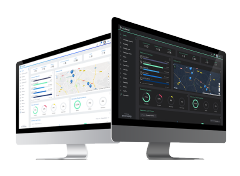
Electric vehicle charging modes
Electric vehicle | EV essentialsCharging modes for electric vehicles: Mode 1, Mode 2, Mode 3 and Mode 4, and each one corresponds to a particular charging type.
As the electric vehicle (EV) industry has progressed, so has the charging of such vehicles. For this reason, four different electric vehicle charging modes have been established depending on the power they support.
They may seem complicated concepts, but in reality each electric vehicle charging mode (2, 3 and 4) corresponds to a specific type of charging. Mode 2 corresponds to normal charging, Mode 3 to semi-fast charging and Mode 4 to fast charging (fast, super-fast and ultra-fast). And, in addition, we find Mode 1 that is equivalent to a domestic charging.
Mode 1 (slow charge)
This charging mode is not exclusive for electric vehicles because it works through a conventional domestic plug whose recharge does not have communication between the vehicle and the plug. So, we talk about a direct connection between the plug and the vehicle.
In other words, it is a charging done through a household plug like the one we use to connect home appliances. It is the simplest charging system whose socket does not include security. For this reason, it is oriented mainly to the recharge of motorcycles and electric bicycles, with low consumptions up to 10 amps.
In case we want to use it for charging our electric car, it will be necessary to have the appropriate protections and limit the charging power of the car. Otherwise, we could suffer the risk of overheating the electrical installation.
In summary, this mode is characterized by:
- Single-phase charging using alternating current
- Domestic socket (for example Schuko)
- No communication between charging and vehicle
- Maximum power of 3.7kW with intensity up to 16 amps and 230 volts
Mode 2 (slow charge)
Equivalent to a conventional or slow charging, in this mode we also talk about charging by using a conventional domestic plug. From this mode, we are already talking about exclusive charging modes for electric vehicles.
The process goes through a device with pilot wire function in order to control the connection with the electric vehicle. That is, the connection is made by using a security adapter. In this case, the charging process uses around 10 amps, with 230 volts and about 2,4kW.
The connection is made by using the wire supplied by the car manufacturer, which usually has a control system between the vehicle and the plug and includes a differential protection system. This allows you verify if you are correctly connected to the network, choose the charging speed and activate or deactivate the charging session from the wire or from the vehicle or the app, in case you have it.
Nowadays, this is one of the most common charging modes for electric cars in the linked charging (that is, in your garage), since most manufacturers include the wire with the charging unit when purchasing the vehicle, whose plug it’s usually Schuko type.
In summary, this mode is characterized by:
- Single-phase charging using alternating current
- Domestic wall socket
- Communication between the plug and the vehicle
- Safety adapter
Mode 3 (semi-fast charge)
Equivalent to a semi-fast charging, in this mode we have a specific terminal for charging electric vehicles, which has a built-in control and safety system, both for the installation and for the vehicle.
It’s an intelligent terminal (wall box*) which incorporates electrical protections and a specific connector with pilot wire function to manage the charging process.
This wall connector has a power system designed for electric cars and includes load monitoring and protection functions, even cutting off the power supply when it does not detect a plugged wire.
Both ends of the wire have specific connectors, which will usually be Type 1 (SAE J1772 or Yazaki) or Type 2 (IEC 62196-2 or Mennekes).
With Mode 3, alternating current charging are allowed, both in single-phase and three-phase, with intensities of up to 63A, but the most frequent are 32A in single phase, with what we talk about powers up to 7.5kW, and it’s not uncommon to find 16 amps and 3.7 kW of power.
In summary, this mode is characterized by:
- Single-phase or three-phase alternating current charging
- Specific connector (usually Mennekes type)
- Communication between charging point and vehicle
- Security protections
It’s worth mentioning that this mode of charging is much safer, faster and more reliable than the previous one. In addition, both this mode and the previous one are ideal for domestic use for your plug-in hybrid or 100% electric car.
And what's a wall box?
This charging point, located on the wall, feeds on the electrical supply provided by the house, so it’s essential to consult a specialized company about the safety of the electrical installation and the power supported.
These charging points are common for electric vehicle drivers thanks to their simple installation, easy use and low cost.
Mode 4 (fast charge)
In this case, we also have an intelligent terminal that, unlike mode 3, carries out the charging by using high-power direct current, thus allowing fast, super-fast and ultra-fast charging. The electric vehicle is connected to the Low Voltage network through a charging station which is the responsible to convert alternating current to continuous and plug the electrons directly into the battery of your car at a very high rate.
The terminal allows to be informed of the entire charging process, as well as the state of the battery at any time. The entire control and protection system is carried out by the charging station. In addition, it usually has several cables with different connector types, such as CHAdeMO and CCS.
The range of powers in which this mode is located is currently between 22kW and 400kW. This means that at maximum power we could recover a range of 100km in less than 3 minutes.
However, this mode has two negative points. On the one hand, it’s not recommended for daily use depending on the car as we could damage its battery. On the other hand, not all electric vehicles are prepared for this type of recharge since they cannot support so much power. But the new models are designed to withstand this type of charging and in such a way that the battery is not affected.
In summary, this mode is characterized by:
- Fast, super-fast and ultra-fast charging in direct current
- Communication between charging point and vehicle
- Charging points located on fast roads, not recommended for private sites
Want to know more about EV?
To know more about current charging types in the electric vehicle industry, do not miss the following post:
🚙 And how can Place to Plug help you?
Offering an end to end solution for the entire EV charging industry, whether if you are an EV driver, a developer, a business or an institution!



Leave a comment
Comments ( 1 )
Nice post! Electric bikes are becoming the future transport medium. EVs are experiencing a huge growth worldwide. Find best electric bikes and scooter by AMO Electric Bikes for your daily commute. visit:- https://www.amomobility.com/